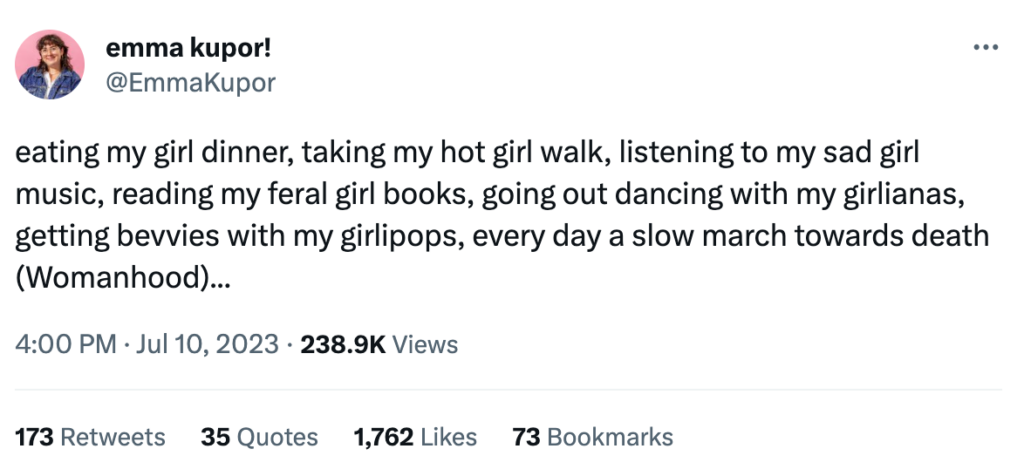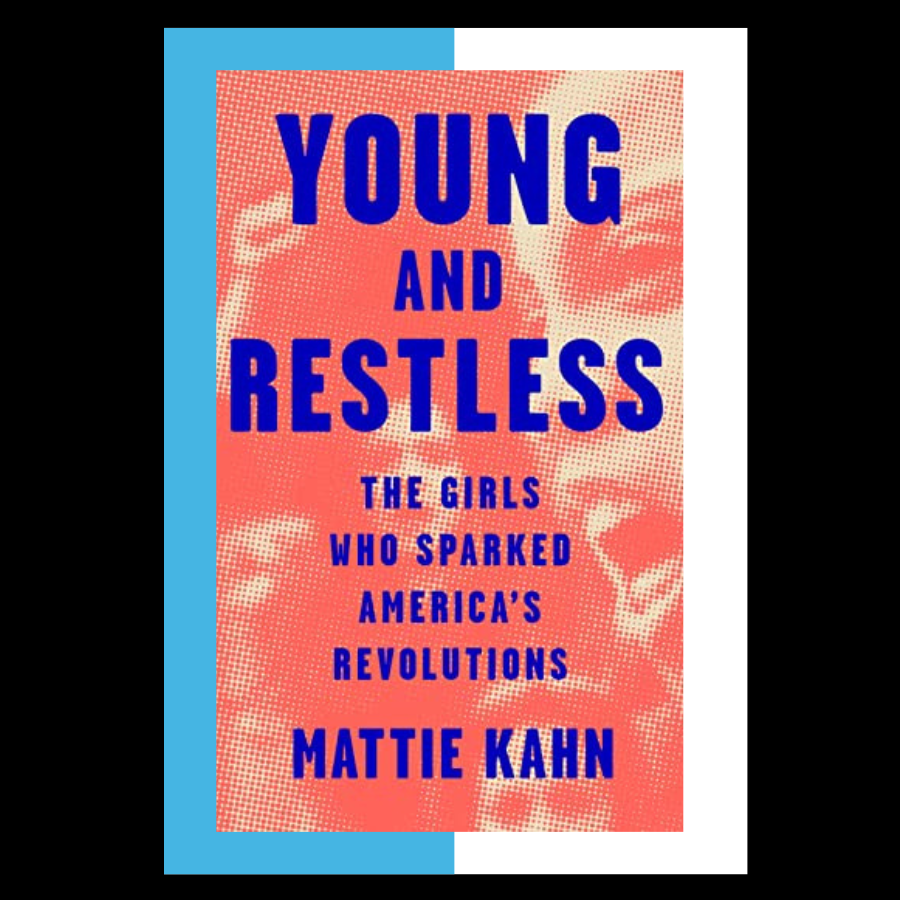This post may include affiliate links, which means we make a small commission on any sales. This commission helps Feminist Book Club pay our contributors, so thanks for supporting small, independent media!
Mattie Kahn begins Young and Restless: The Girls Who Sparked America’s Revolutions by recalling a realization that she just hadn’t read about that many girls making history. She has trouble naming any beyond Sacagawea or Anne Frank. Kahn, a journalist who covers women’s issues and has worked for publications like Glamour and Vogue, seeks to rectify this problem by delving deeply into the many contributions that girls and young have women made to various American social movements.
Beginning with the labor movement in Lowell, Massachusetts; through the Civil War, the struggles for women’s suffrage, and Black Civil Rights; student Vietnam war protests; and the continuing fights for climate action, reproductive rights, and racial justice, Kahn traces a lineage of girls who stood up for what they believed in. She shares the names and stories of the girls and young women who ignited movements, held banners, marched, and brought those issues to light. She also investigates the societal forces and choices of movement leaders that kept some of them in the shadows while electing to use others as movement spokespeople.
Young and Restless covers a lot of ground–almost two centuries worth of social movements in less than three hundred pages. Each chapter names so many girls who contributed to important moments in history that sometimes the effect is a little dizzying. The book could easily be double its length if it went into each story and case study in detail.
Kahn does profile some of the girls involved in these movements at great length. She often tells stories that run parallel to the ones in our history books, like Claudette Colvin’s. Colvin, a Black high school Junior, refused to give up her seat on the bus to a white passenger well before Rosa Parks took the same action. Parks sparked a nationwide response and her image endures in mainstream media and history books, while, until more recently, Colvin remained relatively unknown.
Kahn considers the ways that Colvin, who was in many ways mentored by Parks, was forgotten by movement leaders when she became pregnant. That, coupled with her family’s background, made her, in their eyes, a less desirable spokesperson for their movement.
In Colvin’s case, and throughout Young and Restless, Kahn considers the ways that teen girlhood fosters the kind of courage and bravado that makes girls great activists, and the ways that adults have both harnessed and hampered these characteristics.
This is the warring nature of girlhood: the power of belief and possibility and the powerlessness that comes with being young and female. It is a time when feelings and convictions can be amplified. Girls can say things that adult women cannot. During freedom summer, girls took busses to the South, feeling they were less likely to be targets of violence than adult men. But, time and time again, the gleam of these young activists in these stories seems to wear off by the time they reach adulthood. As women, their cries for justice are no longer novel and precocious–they are sometimes seen as “hysterical” or off-putting.
In Young and Restless, we see abolitionist Anne Elizabeth Dickinson degraded as an adult for the same vigor that was celebrated in her youth. Fierce student activists put their banners away when they put their engagements rings on. Olivia Julianna, a Gen-Z political activist, wonders what her expiration date is.
Kahn does a good job wrestling with some of these contradictions. Although, the book is also a sweeping project and does not have time to linger as long as I’d like it to with some of the complexities at work. I want to spend more time with these ideas–just like I’d like a little longer with some of these figures.

We–or at least those in positions with media and marketing power–might be obsessed with a certain image of female adolescence. As indicated by Emma Kupor’s recent tweet summing up the slew of trends labeled with the word “girl,” the idea that is proliferating is one of everlasting girlhood, defined by a degree of frivolousness–dinners made of snacks and silly little walks. The message, somehow, is that it is preferable to be a girl than to be a woman.
This is one reason girls are palatable public figures, but girls also are not in true positions of power. In many of these historical cases, they are subject to imposed limits based on their sex, race, and class, or by the institutions of schools and movement politics. Adults elevate or suppress the girls in Young and Restless based on their movements’ needs. They make them visible or invisible, treating them like adults when they are not but dismissing them as children when convenient.
But, across time, the girls Kahn highlights find their own power at pivotal times in large and small ways, often risking personal peril. Labor organizers in Lowell in 1836 made newspapers that reminded me of Riot Grrrl’s zines. A group of young women in Chicago made a network to make abortion accessible in 1969. A girl in Minneapolis took a video of a brutal police murder in 2020 and shared it with the world.
They are Lucy Larcom, Heather Booth and Darnella Frazier.
In Young and Restless, Mattie Kahn makes sure we know their names.

